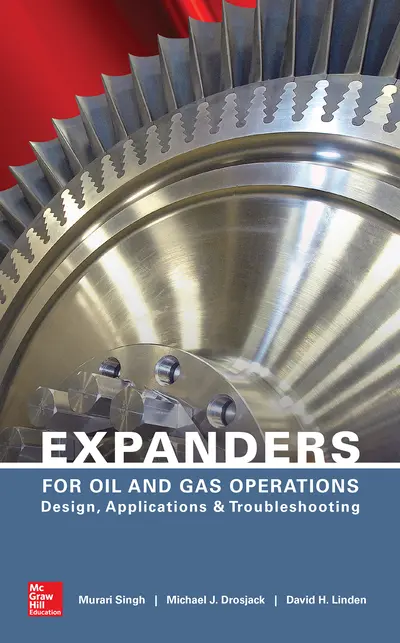My Account Details

ISBN10: 0071799923 | ISBN13: 9780071799928

Step 1 . Download Adobe Digital Editions to your PC or Mac desktop/laptop.
Step 2. Register and authorize your Adobe ID (optional). To access your eBook on multiple devices, first create an Adobe ID at account.adobe.com. Then, open Adobe Digital Editions, go to the Help menu, and select "Authorize Computer" to link your Adobe ID.
Step 3. Open Your eBook. Use Adobe Digital Editions to open the file. If the eBook doesn’t open, contact customer service for assistance.
Publisher's Note: Products purchased from Third Party sellers are not guaranteed by the publisher for quality, authenticity, or access to any online entitlements included with the product. Effective methods for recovering gas energy using expanders Expanders for Oil and Gas Operations offers in-depth details on different types of expanders, addressing the background, mechanical design features, design and operating requirements, operational processes, and potential problems for each class of expander. The book also discusses rotor dynamics, vibration theory, material strength, life estimation, and probabilistic analysis. The information in this practical, illustrated resource will help you to maintain and improve existing expanders and implement design enhancements for increased expander capacity as well as lifespan and maximum energy reuse. Comprehensive coverage includes: CCU hot gas expanders Nitric acid expanders for chemical applications Turboexpanders/cryogenic turboexpanders Rotor dynamics Bladed disk vibration and reliability Damage in material and life analysis Probabilistic concept and risk assessment
Ch 2. Design Features Including Design Criteria
Ch 3. Auxiliary Systems
Ch 4. Applications
Ch 5. Process Applications and Overview
Ch 6. Troubleshooting Guide
Ch 7. Statistical Analysis and Life Assessment
Ch 8. “Cold” and “Warm” Expander Overview
Ch 9. Design Features Including Design Criteria
Ch 10. Auxiliary Systems
Ch 11. Historical Background on the Design and Use of Ethylene Oxide and Nitric Acid Hot Gas Expanders
Ch 12. Design Features Including Design Criteria
Ch 13. Auxiliary Systems
Ch 14. Applications
Ch 15. Process Applications and Overview
Ch 16. Troubleshooting Guide
Ch 17. Design Features Including Design Criteria
Ch 18. Auxiliary Systems
Ch 19. Historical Background on the Design and Use of Cold Gas Expanders
Ch 20. Design Features Including Design Criteria
Ch 21. Auxiliary Systems
Ch 22. Applications
Ch 23. Process Applications and Overview
Ch 24. Troubleshooting Guide
Ch 25. Design Features Including Design Criteria
Ch 26. Auxiliary Systems
Ch 27. Statistical Analysis and Life Assessment
Ch 28. “Cold” and “Warm” Expander Overview
Need support? We're here to help - Get real-world support and resources every step of the way.